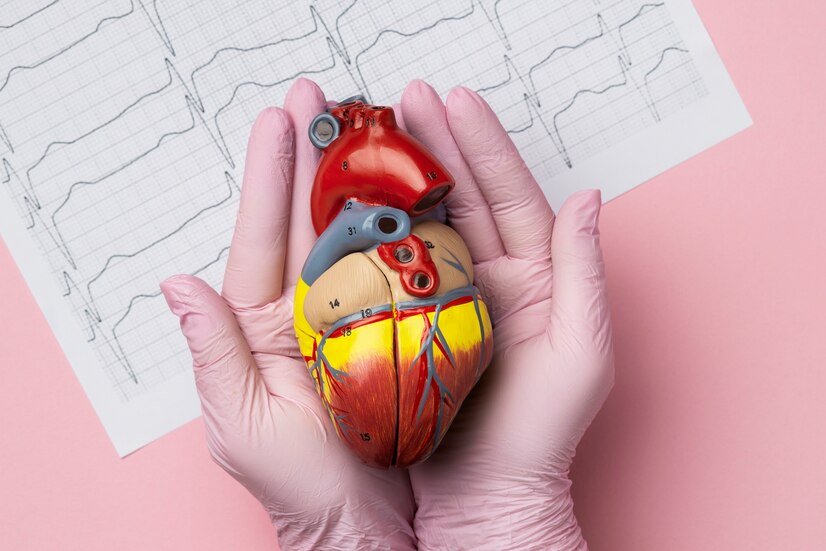Your Best Heart’s Lifeline Understanding and Preventing Coronary Artery Disease. Coronary artery disease (CAD) can feel like a ticking time bomb in your chest. It develops slowly, often with no warning signs, but the consequences for your heart health can be serious. However, there’s hope! By understanding CAD, its impact on your body, and the steps you can take to prevent it, you can become an active participant in safeguarding your heart’s well-being.
Unveiling the Culprit: What is coronary artery disease (CAD)?
Imagine your heart as a tireless engine, pumping oxygen-rich blood throughout your body to keep it functioning. The coronary arteries are the essential highways that deliver this vital fuel. CAD occurs when these arteries become narrowed or blocked by a buildup of plaque, a fatty substance. This buildup, called atherosclerosis, restricts blood flow to the heart muscle, hindering its ability to work properly.
The Ripple Effect: How CAD Affects Your Health
Think of healthy blood flow like a smoothly running river. When CAD narrows the arteries, it’s like building dams in the riverbed. The water (blood) flow slows down and may even become stagnant in some areas. This lack of sufficient blood flow to the heart can lead to several problems:
- Chest pain (angina): This discomfort, often described as a tightness, pressure, or squeezing sensation in the chest, occurs when the heart muscle doesn’t receive enough oxygen. It typically happens during exertion or emotional stress and usually goes away with rest.
- Shortness of breath: When your heart struggles to pump blood efficiently, it can lead to difficulty catching your breath, especially during physical activity.
- Heart attack: In the most severe scenario, a complete blockage in a coronary artery due to a blood clot can cause a heart attack. This is a medical emergency where a part of the heart muscle dies due to lack of oxygen.
- Heart failure: Over time, if CAD weakens the heart muscle and it can’t pump blood effectively, it can lead to heart failure.
Real Life Example:
John, a 55-year-old businessman, had always considered himself healthy. He enjoyed occasional fast food and rarely exercised. One morning, while walking briskly to catch a train, he experienced a crushing chest pain that radiated to his arm. He felt short of breath and sweaty. Thankfully, he reached the hospital in time. Doctors diagnosed him with angina caused by CAD. John’s experience became a wake-up call. He adopted a heart-healthy lifestyle, including a balanced diet and regular exercise, to manage his CAD and prevent future complications.
Your Best Heart’s Lifeline: Understanding and Preventing Coronary Artery Disease (CAD)
Who’s at Risk for Coronary Artery Disease?
CAD is a complex condition influenced by various factors. Here are some of the key risk factors:
- Age: As we get older, the risk of CAD increases.
- Family history: Having a close relative with CAD increases your own risk.
- Unhealthy lifestyle habits: Smoking, excessive alcohol consumption, and a diet high in saturated and trans fats contribute to plaque buildup.
- High blood pressure: Uncontrolled high blood pressure puts extra strain on the heart and arteries.
- High cholesterol: Elevated levels of LDL (“bad”) cholesterol and low levels of HDL (“good”) cholesterol promote plaque formation.
- Diabetes: This condition affects how your body regulates blood sugar, which can contribute to CAD.
- Obesity: Being overweight or obese increases your risk of other CAD risk factors like high blood pressure and diabetes.
Empower Yourself: Taking Control of Your Heart Health
The good news is that CAD is preventable and manageable. By adopting a heart-healthy lifestyle, you can significantly reduce your risk and improve your overall well-being:
- Fuel your body right: Focus on a diet rich in fruits, vegetables, whole grains, and lean protein sources. Limit saturated and trans fats, processed foods, and added sugars.
- Maintain a healthy weight: If you’re overweight or obese, losing even a moderate amount of weight can significantly improve your heart health.
- Get moving: Aim for at least 150 minutes of moderate-intensity exercise or 75 minutes of vigorous-intensity exercise per week.
- Manage stress: Chronic stress can worsen CAD symptoms. Practice relaxation techniques like yoga or meditation to manage stress effectively.
- Kick the smoking habit: Smoking is one of the leading risk factors for CAD. Quitting smoking is the single most important step you can take to protect your heart.
- Keep your numbers in check: Work with your doctor to manage blood pressure and cholesterol levels through medication and lifestyle changes.
- Schedule regular checkups: Regular doctor visits allow for early detection and management of CAD and other health conditions.
Your Best Heart’s Lifeline: Understanding and Preventing Coronary Artery Disease (CAD)
